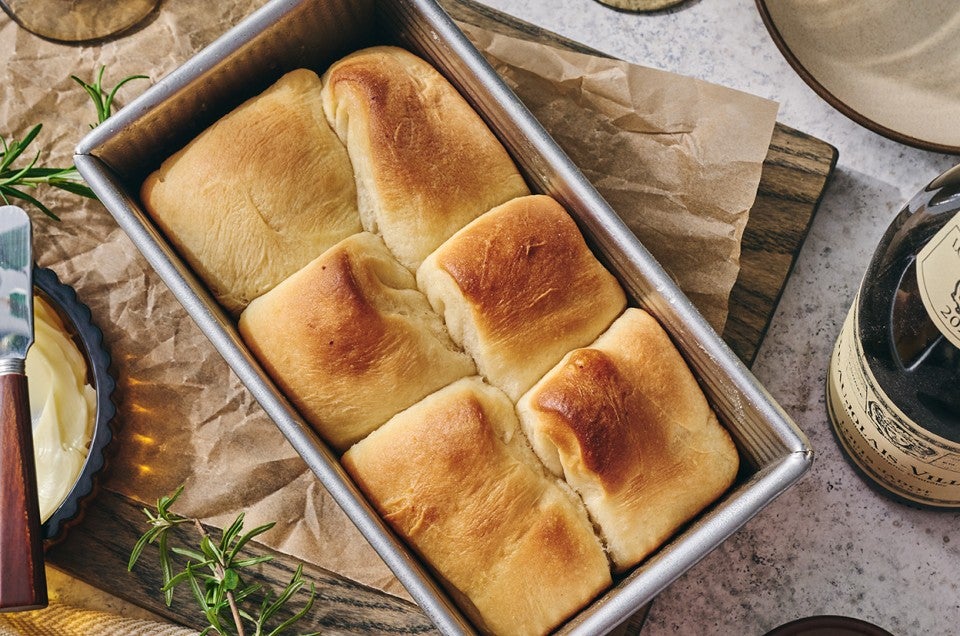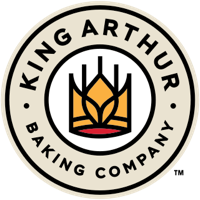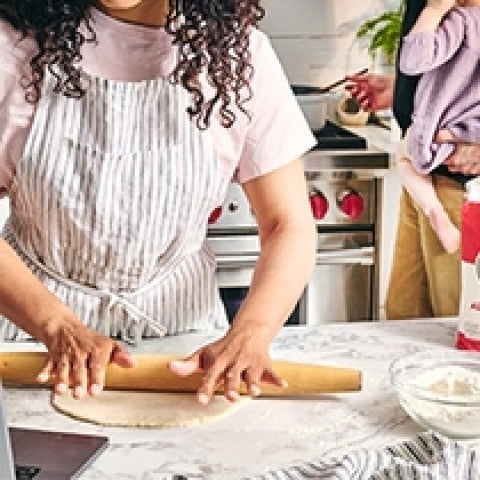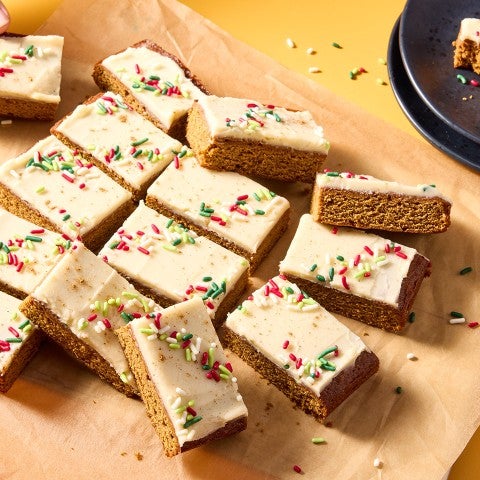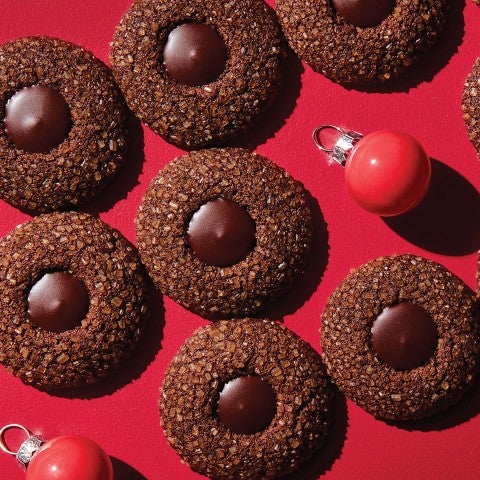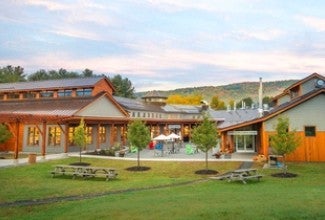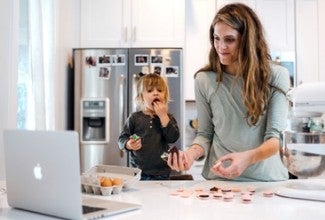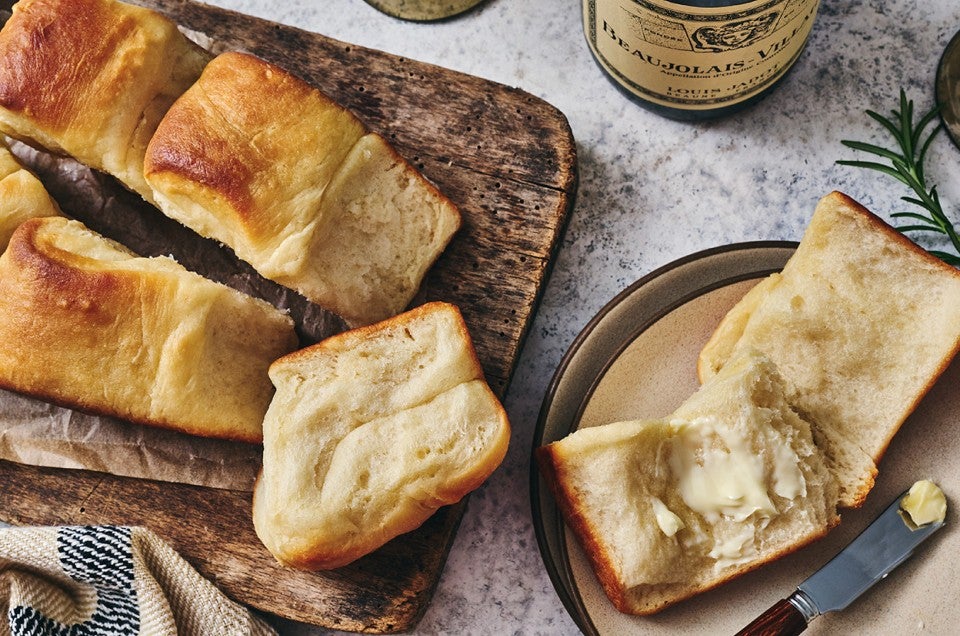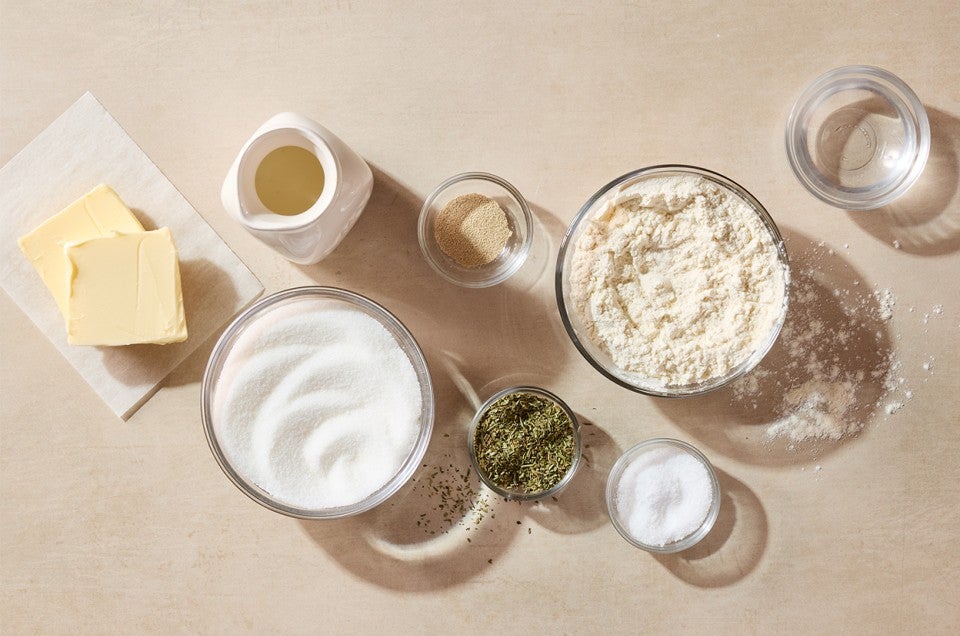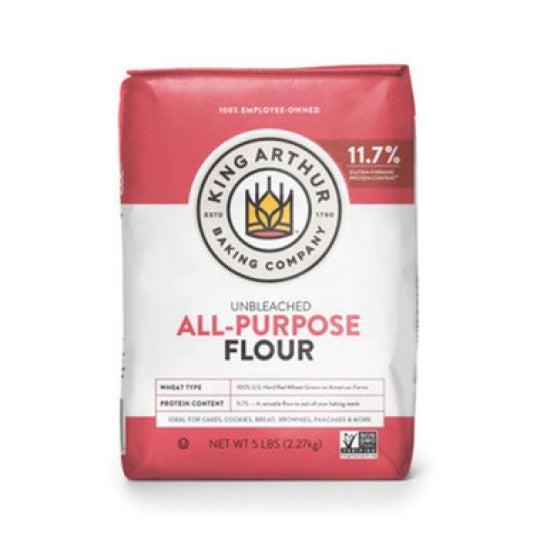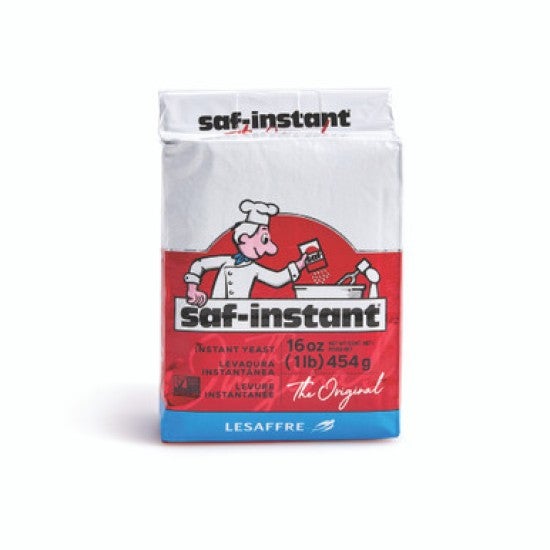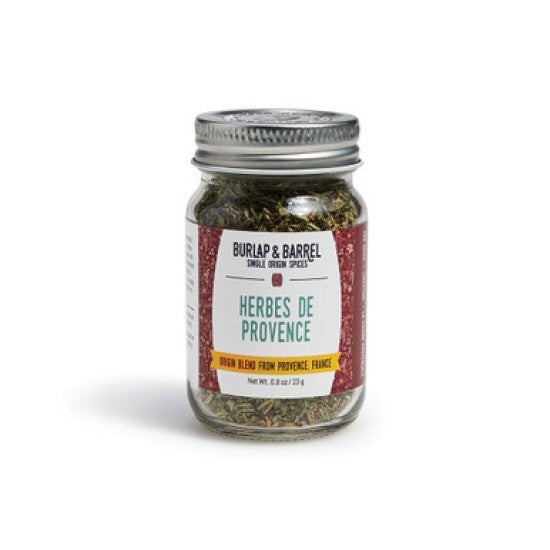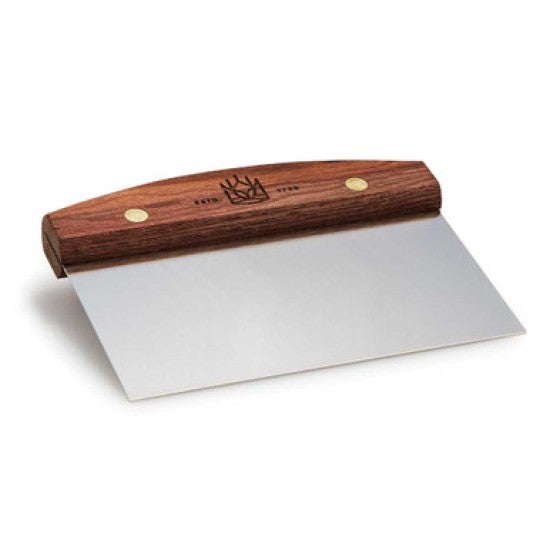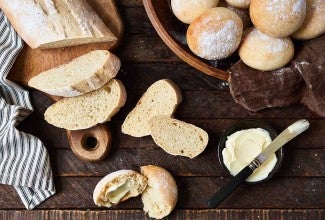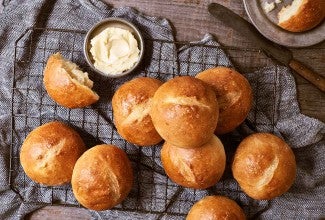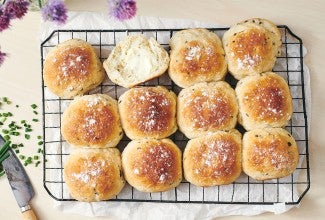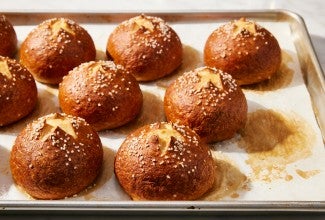Small-Batch Parker House Rolls

Whereas our classic Parker House Rolls recipe makes a full 9" x 13" pan of buttery rolls, this small-batch version makes just six small rolls, which means you don’t need a special reason to bake them. The dough comes together by hand in one bowl and requires no specialty ingredients. But just because this recipe is easier than the original doesn’t mean it’s any less special: These small-batch rolls still have that tender, fluffy, fine-crumbed texture and classic Parker House shape because each one is folded up over generous smear of melted butter before it’s nestled into the pan.
